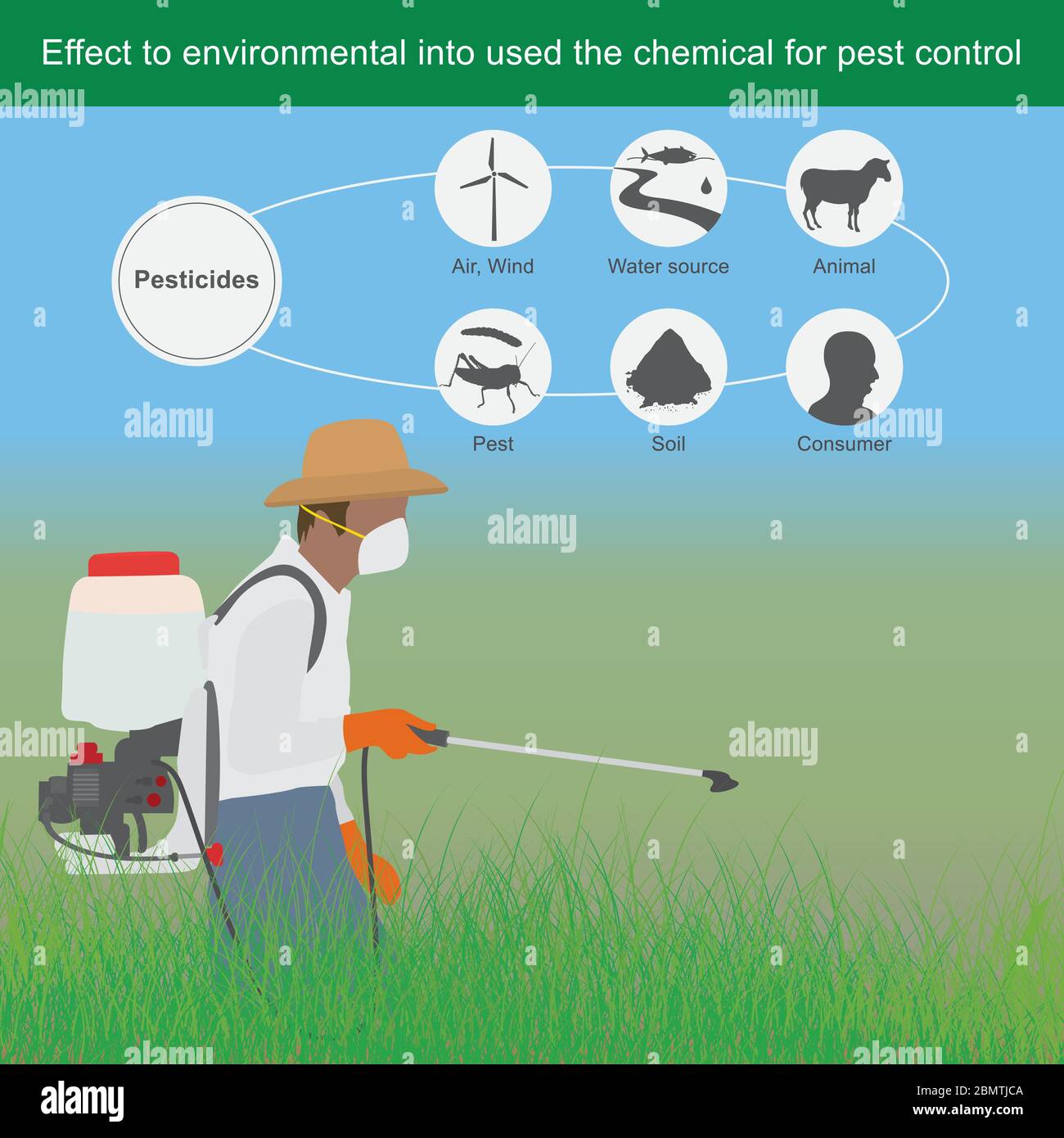The Eco Bed Bug Exterminators Dc Ideas
The Eco Bed Bug Exterminators Dc Ideas
Blog Article
How Eco Bed Bug Exterminators Dc can Save You Time, Stress, and Money.
Table of ContentsGet This Report on Eco Bed Bug Exterminators DcThe Ultimate Guide To Eco Bed Bug Exterminators DcNot known Details About Eco Bed Bug Exterminators Dc Getting The Eco Bed Bug Exterminators Dc To WorkEco Bed Bug Exterminators Dc Fundamentals Explained
Because chemicals are hazardous, they are also possibly hazardous to human beings, pets, various other organisms, and the environment. Consequently, individuals that use pesticides or regularly come in call with them must comprehend the relative toxicity, potential health impacts, and preventative actions to lower direct exposure to the items they utilize. Hazard, or danger, of utilizing pesticides is the capacity for injury, or the level of risk associated with using a pesticide under a provided set of conditions.
Nevertheless, applicators can reduce or almost remove direct exposure-- and therefore minimize hazard-- by adhering to the label instructions, making use of individual protective clothing and tools (PPE), and handling the pesticide effectively. Even more than 95 percent of all pesticide exposures come from dermal direct exposure, primarily to the hands and lower arms. By using a pair of unlined, chemical-resistant gloves, this kind of direct exposure can be nearly removed.
The hazardous impacts that occur from a single direct exposure by any route of access are described "acute impacts." The 4 paths of direct exposure are dermal (skin), breathing (lungs), dental (mouth), and the eyes. Acute toxicity is identified by checking out the dermal poisoning, breathing toxicity, and dental poisoning of guinea pig.
Eco Bed Bug Exterminators Dc for Dummies
Acute toxicity is measured as the quantity or focus of a toxicant-- the a.i.-- needed to eliminate half of the pets in a test population. This action is typically shared as the LD50 (dangerous dose 50) or the LC50 (lethal focus 50). Furthermore, the LD50 and LC50 worths are based on a solitary dosage and are tape-recorded in milligrams of pesticide per kg of body weight (mg/kg) of the test pet or partially per million (ppm).
The lower the LD50 or LC50 worth of a chemical item, the better its toxicity to human beings and animals. Chemicals with a high LD50 are the least toxic to humans if used according to the directions on the item label. The persistent poisoning of a pesticide is determined by subjecting guinea pig to long-lasting direct exposure to the active ingredient.
The chronic poisoning of a chemical is more hard than severe poisoning to identify via lab evaluation. Products are classified on the basis of their family member acute poisoning (their LD50 or LC50 values). Pesticides that are categorized as extremely harmful (Poisoning Group I) on the basis of either dental, facial, or inhalation poisoning have to have the signal words DANGER and poisonous substance published in red with a skull and crossbones sign plainly displayed on the front panel of the package tag.
The intense (solitary dose) dental LD50 for chemical items in this team varies from a trace amount to 50 mg/kg. As an example, exposure of a couple of drops of a material taken by mouth could be fatal to a 150-pound person. Some chemical products have simply the signal word risk, which tells you nothing about the intense poisoning, just that the product can create extreme eye damages or extreme skin irritability
4 Simple Techniques For Eco Bed Bug Exterminators Dc
In this classification, the acute dental LD50 varieties from 50 to 500 mg/kg. A teaspoon to an ounce of this material can be fatal to a 150-pound individual (exterminator). Chemical products identified as either a little harmful or reasonably safe (Toxicity Groups III and IV) are needed to have the signal word CAUTION on the chemical tag

All chemical toxicity values, consisting of the LD50, can be located on the item's Material Security Information Sheet (MSDS) - bed bug heater rentals. Chemical tags and MSDS can be obtained from retailers or produces. Furthermore, a lot of products additionally know that can be found on the Web. The signs of chemical poisoning can vary from a useful reference light skin irritability to coma and even death.
Since of prospective health problems, pesticide customers and handlers have to recognize the common signs and symptoms of pesticide poisoning. The impacts, or signs, of chemical poisoning can be generally specified as either topical or systemic.
The 3-Minute Rule for Eco Bed Bug Exterminators Dc
Dermatitis, or swelling of the skin, is accepted as one of the most generally reported topical result related to pesticide direct exposure. Signs and symptoms of dermatitis array from reddening of the skin to breakouts and/or sores. Some individuals tend to cough, hiss, or sneeze when exposed to chemical sprays. Some people respond to the solid smell and irritating results of oil extracts utilized as service providers in pesticide items.
This symptom normally subsides within a few minutes after an individual is eliminated from the direct exposure to the irritant. A response to a pesticide item that causes a person not only to sneeze and cough but likewise to develop severe acute breathing signs and symptoms is much more most likely to be a true hypersensitivity or sensitive response.
Systemic effects are quite various from topical results. They usually happen away from the initial factor of get in touch with as a result of the chemical being absorbed into and distributed throughout the body. Systemic results frequently consist of nausea, vomiting, exhaustion, migraine, and digestive disorders. In advanced poisoning situations, the individual might experience adjustments in heart price, problem breathing, convulsions, and coma, which could bring about fatality.
Report this page